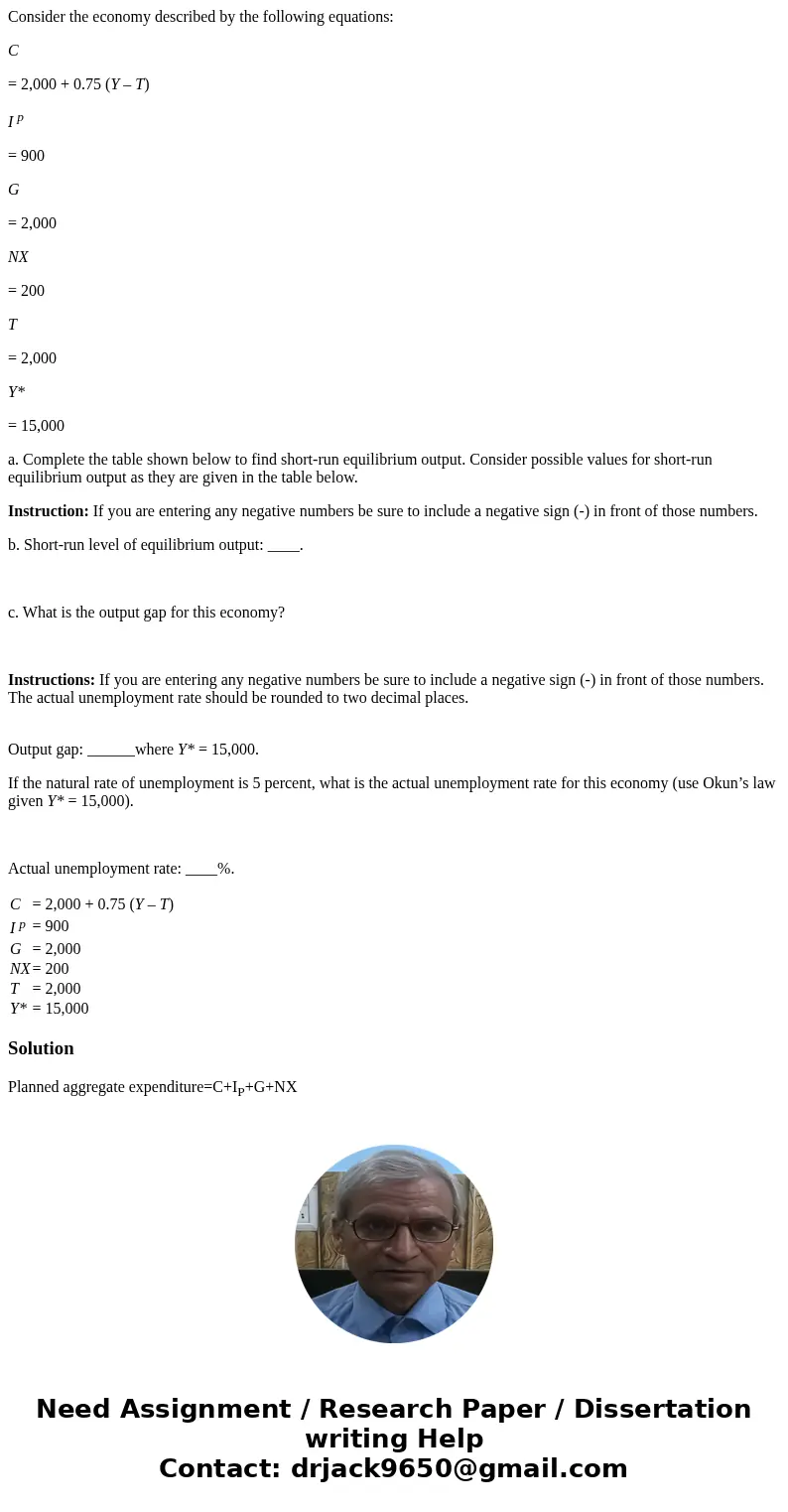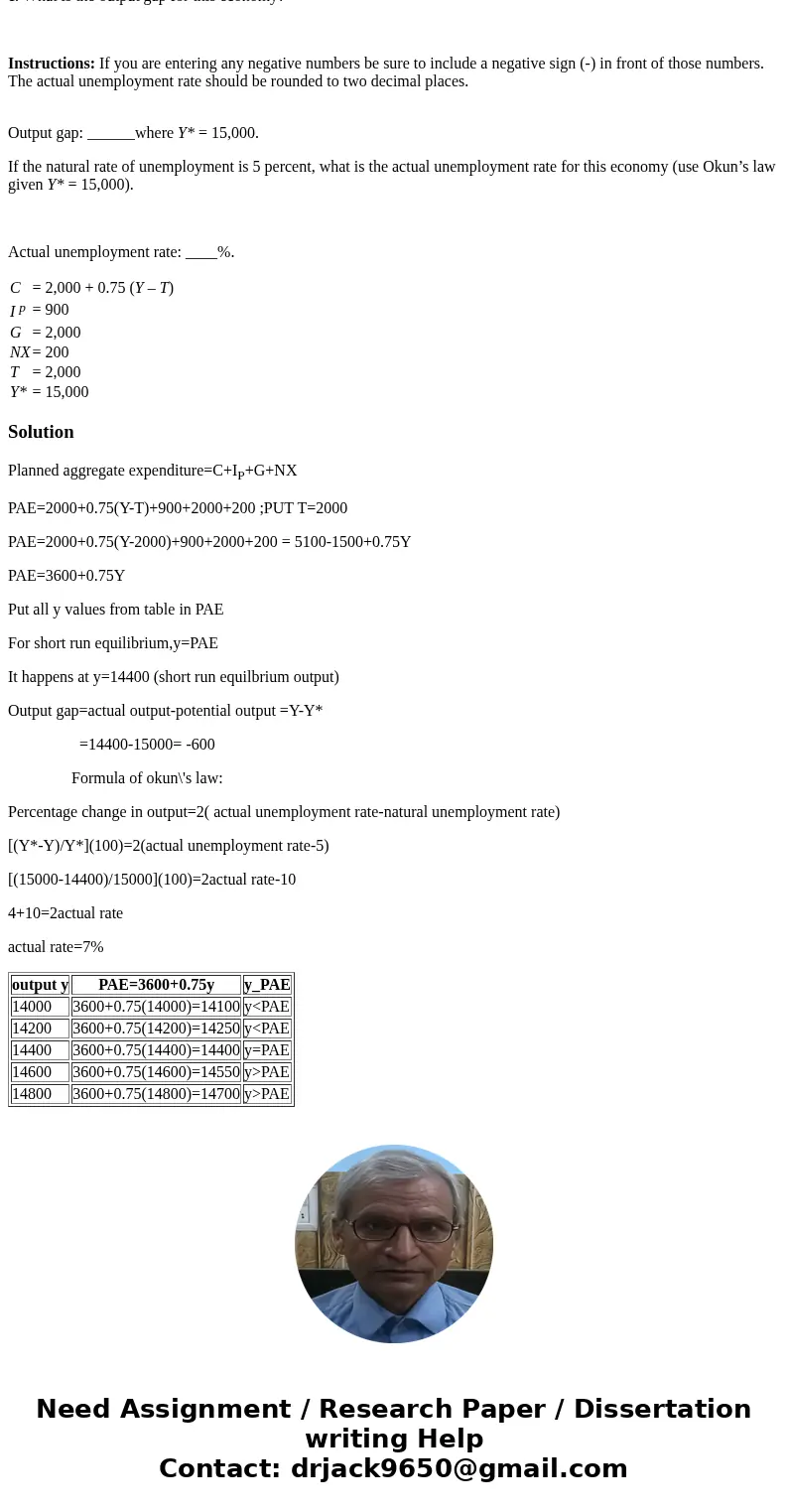Consider the economy described by the following equations C
Consider the economy described by the following equations:
C
= 2,000 + 0.75 (Y – T)
I p
= 900
G
= 2,000
NX
= 200
T
= 2,000
Y*
= 15,000
a. Complete the table shown below to find short-run equilibrium output. Consider possible values for short-run equilibrium output as they are given in the table below.
Instruction: If you are entering any negative numbers be sure to include a negative sign (-) in front of those numbers.
b. Short-run level of equilibrium output: ____.
c. What is the output gap for this economy?
Instructions: If you are entering any negative numbers be sure to include a negative sign (-) in front of those numbers. The actual unemployment rate should be rounded to two decimal places.
Output gap: ______where Y* = 15,000.
If the natural rate of unemployment is 5 percent, what is the actual unemployment rate for this economy (use Okun’s law given Y* = 15,000).
Actual unemployment rate: ____%.
| C | = 2,000 + 0.75 (Y – T) |
| I p | = 900 |
| G | = 2,000 |
| NX | = 200 |
| T | = 2,000 |
| Y* | = 15,000 |
Solution
Planned aggregate expenditure=C+IP+G+NX
PAE=2000+0.75(Y-T)+900+2000+200 ;PUT T=2000
PAE=2000+0.75(Y-2000)+900+2000+200 = 5100-1500+0.75Y
PAE=3600+0.75Y
Put all y values from table in PAE
For short run equilibrium,y=PAE
It happens at y=14400 (short run equilbrium output)
Output gap=actual output-potential output =Y-Y*
=14400-15000= -600
Formula of okun\'s law:
Percentage change in output=2( actual unemployment rate-natural unemployment rate)
[(Y*-Y)/Y*](100)=2(actual unemployment rate-5)
[(15000-14400)/15000](100)=2actual rate-10
4+10=2actual rate
actual rate=7%
| output y | PAE=3600+0.75y | y_PAE |
|---|---|---|
| 14000 | 3600+0.75(14000)=14100 | y<PAE |
| 14200 | 3600+0.75(14200)=14250 | y<PAE |
| 14400 | 3600+0.75(14400)=14400 | y=PAE |
| 14600 | 3600+0.75(14600)=14550 | y>PAE |
| 14800 | 3600+0.75(14800)=14700 | y>PAE |


 Homework Sourse
Homework Sourse